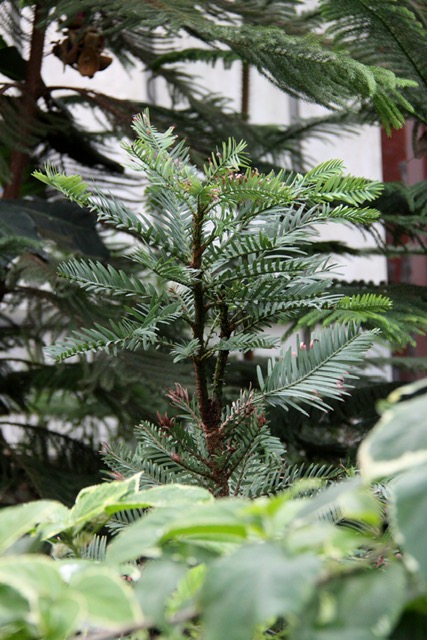On your next visit to the Australasia Pavilion at the Toronto Zoo, keep your eyes peeled in the walk-through aviary for a very special coniferous tree. Planted beside the soft-needled Norfolk Island pines in the first garden bed (between the pathway and the tree kangaroo exhibit) is a Wollemi (“WALL-em-eye”) pine (Wollemia nobilis). Although this tree is only six feet tall, it is highly distinctive with its flattened, elongated leaves. Different from all other living plants, the Wollemi pine closely resembles fossils from 90-200 million years ago, when its ancestors were chewed on by dinosaurs. And just like dinosaurs, this species was thought to be long extinct. Imagine the botanical world’s surprise when, in 1994, a grove of these prehistoric trees was discovered in a remote canyon in eastern Australia!
How did such a unique tree avoid detection for so long? Although fossilized Wollemi pines have been found across most of the southern hemisphere, the modern-day Wollemi pine is critically endangered. Only 80 mature trees and approximately 300 young trees are known in the wild, and they are all found in one remote 10 km2 area of Wollemi National Park near Sydney, Australia. Because of their rarity and uniqueness, Wollemi pines are the focus of an intense research and conservation program with conservationists safeguarding the fragile wild population is by cultivating seedlings in botanical gardens. This is the plant equivalent of the zoo’s animal breeding programs!
Today, Wollemi pines are available to the public: their sale helps to raise conservation funds for the wild population. The Toronto Zoo acquired two Wollemi pines in 2009 – which both are exact genetic matches to one of the original trees discovered in 1994. Although they were both planted in the aviary, the second tree recently returned to the greenhouse for rejuvenation. But keep your eyes peeled: you never know when and where in Australasia this “pine-osaur” might show up when it returns!


